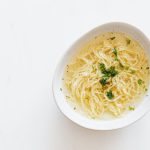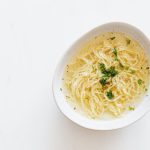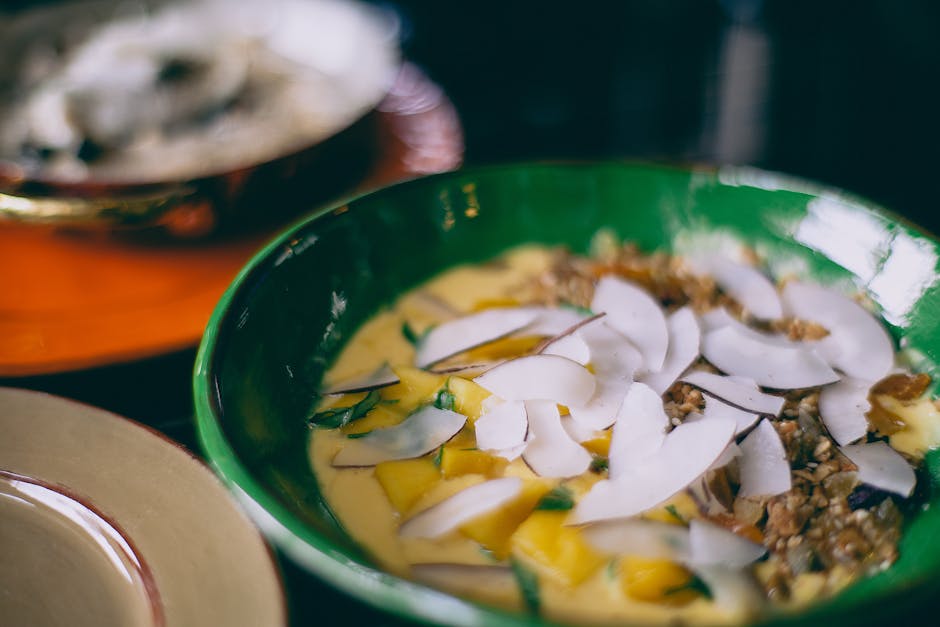Prepare yourself for an exquisite journey into the world of the Best Matcha Latte, a beverage steeped in tradition and bursting with vibrant flavor. This isn’t just another latte; it’s a centuries-old ritual, a cultural cornerstone, and a testament to the meticulous cultivation of a unique ingredient: matcha. Originating in Japan, where it’s been a beloved drink for over 800 years, matcha’s history is intertwined with Zen Buddhism. Initially used by Buddhist monks to enhance focus and mindfulness during meditation, its popularity spread throughout Japanese society, becoming a symbol of both elegance and spiritual practice.
Unlike other green teas where only the leaves are steeped, matcha involves grinding the entire leaf into a fine powder. This unique process means that you consume the entire leaf, resulting in a significantly higher concentration of beneficial compounds. Matcha is packed with antioxidants, vitamins, and minerals, making it more than just a delicious drink; it’s a nutritional powerhouse. Studies have shown that its consumption is linked to improved cognitive function, boosted metabolism, and even enhanced mood. The global matcha market is experiencing explosive growth, with projections estimating a value exceeding billions of dollars by the end of the decade, highlighting its increasing popularity worldwide.
The preparation of a matcha latte itself is a subtle art, balancing the delicate bitterness of the matcha with the creamy sweetness of milk. The quality of the matcha is paramount, with higher grades offering a smoother, richer flavor profile. The traditional method involves whisking the matcha powder with hot water until a frothy emulsion is formed, then combining it with steamed milk. However, modern variations utilize specialized equipment like frothers or blenders for a quicker and equally delicious result. Beyond its intrinsic qualities, the matcha latte holds cultural significance, representing a moment of mindfulness and tranquility in an increasingly fast-paced world. It’s a beverage that encourages mindful consumption, a chance to pause, savor, and appreciate the simple pleasure of a perfectly crafted drink.
From its humble beginnings in the Zen monasteries of Japan to its current status as a global phenomenon, the matcha latte stands as a testament to the enduring appeal of tradition blended with modern innovation. More than just a drink, it’s an experience – a taste of history, a sip of culture, and a moment of mindful indulgence. Discover the unparalleled flavor and numerous benefits of the best matcha latte and embark on a sensory journey unlike any other.
Ingredients and Measurements
Crafting the perfect matcha latte hinges on using high-quality ingredients and precise measurements. The following recipe yields one delicious serving, easily scalable for larger batches. Remember, the quality of your matcha directly impacts the final flavor profile, so don’t skimp on this crucial element!
Matcha Powder: 1-2 teaspoons. This is where personal preference comes into play. 1 teaspoon provides a milder, sweeter latte, while 2 teaspoons deliver a more robust, intensely matcha flavor. We recommend starting with 1 teaspoon and adjusting to your liking. Use a high-quality culinary grade matcha powder for the best results. Avoid using ceremonial grade matcha, as it’s typically more expensive and intended for whisking and drinking on its own, not for mixing into lattes.
Hot Water: 2 ounces (approximately 60ml). The water temperature is critical. Avoid boiling water, as it can scorch the matcha and create a bitter taste. Ideally, use water heated to around 175°F (80°C). You can use a thermometer for accuracy, or simply heat water until it’s just off the boil. The hot water serves to dissolve the matcha powder completely, creating a smooth paste.
Milk: 6-8 ounces (approximately 177-237ml). This is another area of personal preference. Whole milk delivers a creamy, rich texture, while skim milk provides a lighter option. Experiment with different types of milk such as almond milk, oat milk, soy milk, or even coconut milk to find your ideal consistency and flavor. Note that the type of milk you choose will affect the overall sweetness and creaminess of the latte.
Sweetener (Optional): 1-2 teaspoons. Many find the inherent bitterness of matcha balanced by a touch of sweetness. Honey, maple syrup, or agave nectar are all excellent choices, offering natural sweetness without overpowering the matcha flavor. If using sugar, start with 1 teaspoon and add more to taste. Remember, you can always add more sweetener, but you can’t take it away! Consider omitting sweetener entirely if you prefer a less sweet beverage.
Ice (Optional): For an iced matcha latte, prepare the matcha paste as described above, then add ice to your liking. Use high-quality ice made from filtered water for the best taste. If you’re using a blender, add the ice to the blender along with the remaining ingredients.
Additional Enhancements (Optional): Consider adding a pinch of vanilla extract for an extra layer of flavor complexity, or a dash of cinnamon for a warm, spicy note. These additions can elevate your matcha latte to a whole new level of deliciousness. Experiment with different flavor combinations to discover your personal favorites.
Important Note: Always measure your ingredients accurately, especially the matcha powder. Too much matcha can lead to a bitter taste, while too little may result in a weak, underwhelming beverage. Start with the recommended measurements and adjust according to your taste preference.
Equipment List: Crafting the Perfect Matcha Latte
Creating a truly exceptional matcha latte requires more than just high-quality matcha powder and milk. The right equipment ensures consistent results and elevates the entire experience, from preparation to presentation. This list details the essential tools and their recommended specifications, allowing you to achieve barista-level quality at home.
1. Matcha Whisk (Chasen): A traditional bamboo whisk is crucial for creating a smooth, lump-free matcha mixture. Avoid using a metal whisk as it can damage the delicate matcha particles and impart a metallic taste. A good chasen will have approximately 80-100 tines, offering sufficient surface area for efficient whisking. Look for one made from high-quality bamboo for durability and longevity. Proper cleaning and storage (air-dried in a cool, dry place) will extend its lifespan considerably.
2. Matcha Bowl (Chawan): A wide, shallow bowl is ideal for whisking matcha. The shape facilitates efficient whisking and allows for the proper incorporation of air, creating a frothy texture. Traditionally, chawan are made from ceramic, but you can also find beautiful options in other materials like wood or lacquerware. Choose a bowl that is approximately 4-5 inches in diameter. A larger bowl might make whisking more difficult, while a smaller one might be too cramped.
3. Scale: Precision is paramount when working with matcha. A digital kitchen scale capable of measuring in grams is essential for achieving the perfect matcha-to-water ratio. Inconsistent measurements can significantly impact the taste and consistency of your latte. Aim for a scale with a minimum accuracy of 0.1g for the most precise results.
4. Milk Frother: While you can certainly froth milk manually, a milk frother significantly simplifies the process and yields a consistently creamy texture. Handheld electric frothers are readily available and effective. Alternatively, you can use a stovetop method with a saucepan and a whisk, but this requires more skill and attention to prevent scorching. Ensure your frother is appropriately sized for the amount of milk you typically use.
5. Measuring Spoons and Cups: Accurate measurements are vital for consistent results. A set of measuring spoons (especially those measuring teaspoons and tablespoons accurately) and measuring cups will help you maintain precise ratios of matcha to water and milk, ensuring a perfectly balanced latte every time. Consider using a small measuring spoon (1/2 teaspoon) for precise matcha measurements.
6. Fine-Mesh Sieve: Sift your matcha powder before each use to remove any clumps and ensure a smooth, consistent texture in your latte. A fine-mesh sieve will effectively remove any larger particles that may have formed during storage. This step is critical for preventing gritty textures in your final drink.
7. Mug or Glass: Choose a mug or glass that complements your matcha latte’s aesthetic appeal. The size should be proportionate to the amount you’re preparing. A heat-resistant mug or glass is recommended if you enjoy your latte hot. Consider a clear glass to showcase the beautiful vibrant green color of your matcha latte.
8. Clean Water: Using filtered or spring water will contribute to the overall taste of your matcha latte. Tap water may contain minerals or chlorine that can alter the flavor profile. Fresh, clean water is essential for highlighting the subtle nuances of your matcha powder.
Instructions (Matcha Whisk Preparation)
Preparing your matcha whisk, or chasen, correctly is crucial for achieving a smooth, creamy matcha latte without clumps. A well-prepared whisk will last longer and perform better. This section details the process, ensuring you get the most from your matcha experience.
Begin by assessing your chasen. Avoid using hot water to clean your whisk, as this can damage the delicate bamboo bristles. Always rinse it gently under cool or lukewarm water after each use. Allow it to air dry completely before storing; this prevents mold and mildew growth. Proper storage is essential for longevity. Store your chasen in a cool, dry place, ideally in a dedicated case or container.
Before whisking your matcha, ensure your chasen is clean and dry. A dirty or damp whisk will hinder your ability to create a smooth, lump-free mixture. Take a moment to inspect the bristles; if any appear broken or loose, it’s time to replace your whisk for optimal performance. A well-maintained chasen is key to a superior matcha latte.
For a standard serving of matcha latte (approximately 200ml), you’ll need approximately 1-2 grams of matcha powder. The exact amount depends on your personal preference for strength. Start with 1 gram and adjust to your liking. Accurately measuring your matcha powder is vital for consistency. A small digital scale is recommended for precise measurements. Remember, using too much matcha can result in a bitter taste.
Once you’ve measured your matcha, add it to a matcha bowl (chawan). Choose a bowl that’s wide enough to allow for easy whisking. A narrow bowl will hinder your whisk’s movement and make it more difficult to achieve a smooth texture. Next, add approximately 2 tablespoons (30ml) of hot water (around 70-80°C or 158-176°F). Avoid using boiling water, as this can scald the matcha and create a bitter taste. The temperature of the water is crucial for unlocking the matcha’s flavour and preventing bitterness.
Now, begin whisking with your chasen. Use a swift, back-and-forth motion, creating a “W” shape in the bowl. Apply a gentle pressure, avoiding excessive force which can damage the whisk. The goal is to create a smooth, frothy texture without any lumps. This process typically takes around 20-30 seconds. If you encounter lumps, continue whisking until they disappear. Practice makes perfect. Don’t be discouraged if your first attempt isn’t perfect; with practice, you’ll become proficient in creating a smooth and delicious matcha latte.
Once the matcha is fully whisked and has a smooth, frothy texture, add your preferred amount of milk (dairy or non-dairy) and sweetener (optional). Stir gently to combine and enjoy your perfectly crafted matcha latte!
Instructions (Milk Preparation – if applicable)
The quality of your milk significantly impacts the overall taste and texture of your matcha latte. While you can certainly use water, frothed milk elevates the experience, adding creaminess and richness that complements the matcha’s subtle bitterness. We recommend using whole milk for the best results, but you can experiment with alternatives like oat milk, soy milk, or almond milk. However, be aware that different milk types will affect the final texture and sweetness of your latte.
Choosing your milk: Whole milk provides the richest, creamiest texture. If you prefer a lower-fat option, skim milk will still work, though the texture might be slightly thinner. Plant-based milks can be delicious, but their frothing capabilities vary. Oat milk and soy milk generally froth well, while almond milk can be more challenging and may require a higher-powered frother. Consider experimenting to find your preferred milk and frothing method.
Heating and Frothing your Milk: There are several ways to heat and froth your milk, each yielding slightly different results.
Method 1: Using a Milk Frother (Electric): This is the easiest and most consistent method. Pour 1/2 cup (approximately 120ml) of your chosen milk into a stainless steel pitcher or frothing cup designed for your frother. Follow the manufacturer’s instructions for your specific frother. Generally, you’ll want to froth until the milk is doubled in volume and has a light, airy texture. Avoid over-frothing, which can result in a grainy texture.
Method 2: Using a French Press: Heat your milk gently in a saucepan on the stovetop until it’s just about to simmer (around 150-160°F or 65-70°C). Do not boil the milk. Pour the warm milk into a French press. Pump the plunger up and down vigorously for about 20-30 seconds to create a froth. The texture might be slightly less airy than with an electric frother.
Method 3: Manual Frothing (for smaller quantities): For a smaller latte, you can froth milk manually using a whisk. Heat the milk as described in Method 2. Vigorously whisk the milk for several minutes until it becomes foamy and slightly increased in volume. This method requires more effort but provides a good result for smaller batches.
Important Considerations:
Temperature: Avoid overheating the milk, as this can scorch it and impart a burnt taste. The ideal temperature for frothed milk is around 150-160°F (65-70°C).
Cleanliness: Ensure your frothing device and pitcher are clean before you begin. Any residue can affect the taste and texture of your milk.
Experimentation: Don’t be afraid to experiment with different milk types and frothing methods to find what works best for you. The perfect matcha latte is a matter of personal preference.
Instructions (Combining Ingredients)
Creating the perfect matcha latte hinges on the precise and careful combination of ingredients. The order and technique you employ will significantly impact the final taste and texture. This section outlines the steps for achieving a flawlessly smooth and delicious beverage.
Begin by preparing your matcha powder. Use a high-quality ceremonial grade matcha for the best flavor and vibrant green color. For a standard serving, measure out 1-2 teaspoons (2-4 grams) of matcha powder. The amount depends on your personal preference for strength; start with 1 teaspoon and adjust to your liking. Avoid using a metal spoon or whisk as this can affect the flavor and create a metallic taste. Instead, use a bamboo whisk (chasen) or a small, non-reactive whisk.
Next, add your chosen liquid. For a traditional matcha latte, use hot water between 170-180°F (77-82°C). Water that is too hot will scorch the matcha, resulting in a bitter taste. Water that is too cool will not fully dissolve the powder, leaving clumps. Start with 2-3 ounces (60-90ml) of hot water. Pour the water slowly and steadily into a small bowl or cup containing the matcha powder. This gradual addition helps prevent clumping.
Now, the whisking process begins. This is where the magic happens! If using a bamboo whisk (chasen), hold the whisk at a slight angle and whisk vigorously in a W motion. The goal is to create a smooth, frothy mixture without any lumps. This may take some practice, so don’t be discouraged if it doesn’t come out perfectly on your first try. Continue whisking until the mixture is completely smooth and frothy, a process that usually takes around 30-60 seconds. If using a non-reactive whisk, ensure you whisk thoroughly to prevent lumps.
Once the matcha is fully whisked and has a smooth, creamy consistency, you can add your milk. Use your preferred type of milk – whole milk, almond milk, soy milk, or oat milk all work well. For a standard serving, add 6-8 ounces (180-240ml) of your chosen milk. You can heat the milk separately on the stovetop or in the microwave to create a warmer latte. If using cold milk, the latte will be served cold or iced.
Gently stir the matcha mixture and milk together until they are fully combined and the color is evenly distributed. Avoid over-stirring, as this can create too much foam. At this point, you can adjust the sweetness to your preference. Add a touch of honey, maple syrup, or agave nectar if desired. Start with a small amount and add more gradually until you reach your desired sweetness.
Finally, pour your matcha latte into your favorite mug and enjoy! You can garnish it with a sprinkle of matcha powder, a dollop of whipped cream, or a sprinkle of cinnamon for an extra touch of elegance.
Remember to always use high-quality ingredients and practice patience during the whisking process. With a little practice, you’ll be creating perfect matcha lattes every time!
Optional Additions/Customizations
Elevate your Best Matcha Latte experience with these optional additions and customizations. Experiment with different flavors to find your perfect blend!
Sweeteners: While the inherent bitterness of matcha is delightful for many, you can easily adjust the sweetness to your preference. Consider adding 1-2 teaspoons of agave nectar, maple syrup, or honey for a subtle sweetness. For a richer, more complex sweetness, try a touch of vanilla syrup (1/2 – 1 teaspoon). Remember to add the sweetener *after* frothing the milk to ensure it dissolves properly and doesn’t interfere with the frothing process. If using granulated sugar, dissolve it in a small amount of hot water before adding to the latte to prevent a gritty texture.
Milk Alternatives: Matcha lattes are incredibly versatile. Experiment with different milk alternatives to discover your favorite! Oat milk provides a creamy texture and subtle sweetness. Almond milk offers a nutty flavor profile, while soy milk provides a slightly thinner consistency. Coconut milk creates a richer, more decadent latte. Note that the frothing capabilities vary between milk alternatives. Oat and soy milk generally froth well, while almond milk may require a stronger frother. Experiment to find what works best for your chosen milk and frothing method.
Spices: A dash of spice can add depth and complexity to your matcha latte. A pinch of cinnamon (1/4 – 1/2 teaspoon) adds warmth and complements the matcha’s earthy notes. Cardamom (a few crushed pods or 1/4 teaspoon ground) offers a unique aromatic twist. For a more adventurous flavor profile, try a tiny pinch of ginger (1/8 teaspoon) for a subtle zing. Add spices after frothing the milk and before adding the matcha for optimal flavor infusion.
Flavor Enhancers: Explore a variety of flavor enhancers to personalize your matcha latte. A splash of vanilla extract (1/2 teaspoon) enhances the sweetness and adds a comforting aroma. For a chocolatey twist, add a teaspoon of unsweetened cocoa powder. A small amount of matcha powder (1/2 teaspoon) can deepen the matcha flavor. Be mindful of the amount you add, as too much of any flavor enhancer can overpower the subtle nuances of the matcha.
Toppings: Garnish your matcha latte for an aesthetically pleasing and delicious finish. A dusting of matcha powder creates a beautiful green swirl. Whipped cream adds a luxurious touch, while a sprinkle of cinnamon or cocoa powder provides a contrasting color and flavor. Consider adding a few chocolate shavings or even a small cookie for an extra treat. Remember that toppings should complement, not overshadow, the delicate flavor of the matcha latte.
Professional Recommendation: Start with small amounts of any additions and adjust to your liking. Taste as you go to ensure the flavors are balanced and harmonious. Don’t be afraid to experiment and find your signature matcha latte recipe!
Best Matcha Latte: Recommendations
Our Best Matcha Latte is crafted using premium-grade ceremonial matcha for a vibrant green hue and an unparalleled smooth, subtly sweet flavor profile. To fully appreciate its exquisite taste and maximize its benefits, we offer the following recommendations.
Serving Suggestions: For the ultimate experience, we recommend enjoying your Matcha Latte at a temperature of around 140-160°F (60-71°C). Avoid excessively hot temperatures as this can scorch the matcha and diminish its delicate flavor. You can adjust the temperature to your preference, but remember that a slightly cooler temperature will allow you to appreciate the nuanced flavors more fully. Feel free to experiment with different milk types – oat milk, almond milk, or even coconut milk can add a unique dimension to the drink. For a frothy texture, use a milk frother for a café-style experience. A sprinkle of matcha powder on top adds a beautiful visual touch and intensifies the matcha flavor.
Storage Conditions: Proper storage is crucial to maintain the freshness and quality of our Matcha Latte. Once prepared, consume your Matcha Latte immediately for the best taste and texture. If you need to store it, transfer it to an airtight container and refrigerate it for up to 24 hours. Do not refreeze. Our pre-mixed Matcha Latte powder, if unopened, should be stored in a cool, dark, and dry place away from direct sunlight and strong odors. This will help to preserve its vibrant green color and delicate flavor for an extended period.
Complementary Dishes: The earthy and slightly sweet notes of our Matcha Latte pair beautifully with a variety of dishes. It complements light and airy pastries such as delicate croissants or scones. The subtle bitterness of the matcha balances well with the sweetness of desserts, making it a perfect accompaniment to a light fruit tart or a slice of matcha cake (a truly delicious match!). For a more savory pairing, consider enjoying your Matcha Latte alongside a light breakfast of avocado toast or a small plate of fresh fruit. The matcha’s unique flavor profile also makes it a surprisingly good pairing with lighter Asian-inspired dishes.
Nutritional Information (per serving, approximate values may vary slightly): Calories: Approximately 150-200 (depending on milk choice and added sweeteners). Fat: 5-10g (depending on milk choice). Carbohydrates: 15-25g (depending on milk choice and added sweeteners). Protein: 5-8g (depending on milk choice). Note: This information is based on a standard serving using a specific amount of matcha powder and milk. Nutritional content may vary based on the specific ingredients and quantities used.
Important Note: While matcha offers several health benefits, including antioxidants, individual responses may vary. If you have any specific dietary concerns or allergies, please consult with a healthcare professional or check the ingredient list for potential allergens before consumption.





